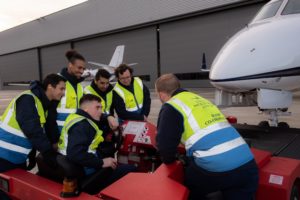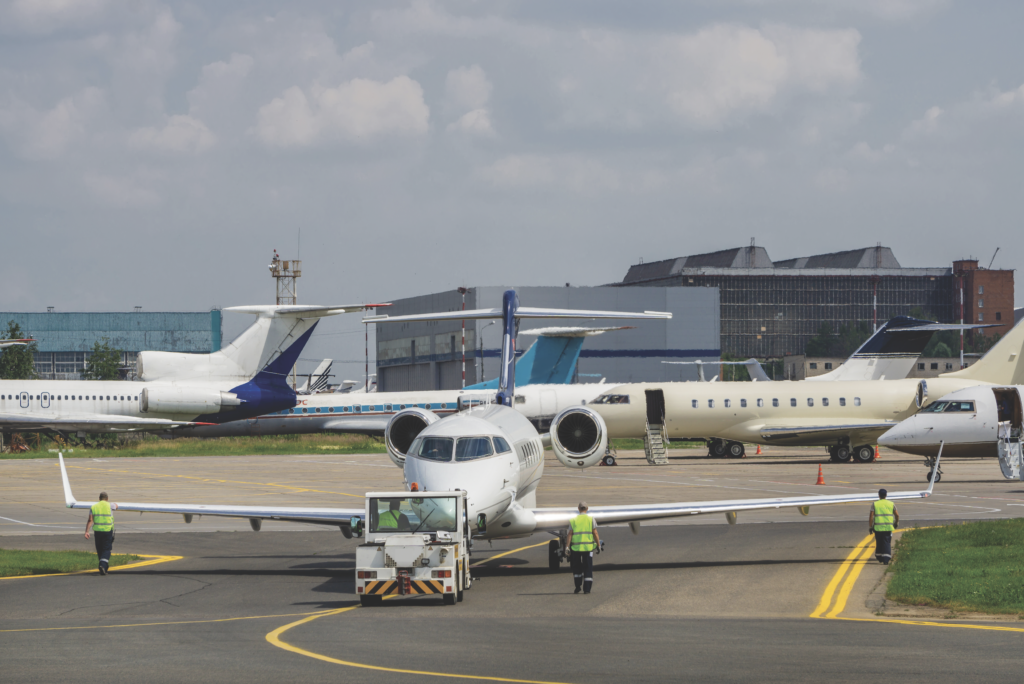Words by Steve Johnson
Safety Management Systems have proven their worth in business aviation over many years. Although they are not a mandatory requirement, companies that implement programs such as NATA’s Safety First and IBAC’s IS-BAH are setting a high standard for others to follow.
IS-BAH conducted more than 100 accredited audits last year and during the first few months of 2021. But there’s still a lot of work to do – an endless task of education, implementation and development, such is the nature of all things safety-related.
Understand the basics
A Safety Management System (SMS) supports the smooth and safe running of ground handling operations. When Covid-19 struck in early 2020 safety considerations became more complex and exacting because of the additional and increased risks. Over the past year Covid-19 compliant practices and measures have become familiar in aviation workplaces. In parallel there has been much lower levels of aviation activity, which in turn has created its own set of problems as the sector recovers. Companies have had to act on fluctuating safety advice and government guidance and legal provisions. Despite these challenges, Covid-19 may well in time act as an influential catalyst for more widespread adoption of SMS.
Fundamentally the aviation sector strives to provide quality services and to be commercially successful within a safe environment for its employees and customers. At airports around the world millions of gallons of fuel are pumped, thousands of aircraft are moved and serviced every day safely – a complex process that involves many different people and vehicles. But even when things are deemed safe enough, there are always weaknesses.
Although operations at different FBOs are similar a SMS cannot be purchased off the shelf. Mike France, NATA’s managing director of safety and training says, “People often ask where they can get a SMS. Many see it as a piece of software or an off-the-shelf manual. A SMS at its core is a way of managing safety. For it to be truly effective it must be organically developed. The SMS examines how things are done and asks if things could be done better, or if anything is missing.”
These are easy principles to understand, but achieving effective implementation of a SMS is harder.
Terry Yeomans, programme director at IS-BAH says, “No one is perfect and there is always that little thing that can make things better for everyone.
“Implementing a SMS works best as part of a collaborative effort, from the CEO all the way through the workforce. Once that kicks in and open dialogue takes place, you are on the path to success.”
Systemic resiliency

Covid-19 has created substantial risks, particularly for individual safety. But the pandemic has also tested how effectively FBOs and aircraft operators have introduced SMS. A good SMS provides a system about how to develop ways of dealing with a pandemic. IS-BAH for example includes a question regarding how to manage the potential health risks from third world countries.
Benjamin Goodheart, founder and principle consultant of Magpie Safety Systems reports seeing a lot of companies struggle during the pandemic because they had not planned sufficient resiliency into their operations. He says, “By acknowledging that a SMS and corresponding system-level improvements are meant to do more than simply create paperwork or satisfy an auditor, there is an opportunity to build resistance to errors and uncertainty.
“We’ve seen emergency and business continuity plans that were unpracticed, or only loosely contemplated, leaving entire organizations hanging in the balance.”
In the USA, NATA recognized the need to develop and promote standards for FBO and aircraft cleaning and disinfection to reassure travelers and staff at the beginning of the pandemic. Guidance was collected and disseminated via the NATA Safety 1st Clean standard. “A standards and self-certification program, Safety 1st Clean is based on industry best practice and government guidance of facility cleaning. As of late February 2021, over 400 locations have completed the certification process,” says France.
Implementation
Implementing a SMS, specifically regarding the how and who, can require experienced help to provide guidance and support. Ownership of the SMS by a company’s leadership team is essential from the outset. Goodheart says, “The key thing is to understand the project management as well as the required competencies. If you task a pilot with developing and implementing a SMS, things can often fall apart when real change management and data analysis becomes necessary.”
SMS should be made to be simple but can shift to being complex. “No single system works all of time, so the only viable solution is to have a dynamic, adaptive system – you’re less likely to be caught out when the organization is tested,” says Goodheart.
The implementation of any system in a company suggests that a consultant should be used to deliver a project. It may be appealing to buy a complete turnkey solution – with end user involvement for fine tuning, but this will not provide the optimum course of action for a SMS, says Goodheart.
“You can keep control and lead the project
in-house. You don’t need a consultant to write a SMS manual. However, delivering elements such as safety risk management, training, safety assurance, data analysis and even change management can be a lot more efficient with an experienced partner,” says Goodheart. “We enjoy partnerships with clients who are willing to do some heavy lifting because it means they have skin in the game.”
Training is the primary way of improving safety. In late 2019 NATA launched its online Safety 1st Training Center (STFC) before retiring its legacy system. Any remaining users were converted to the STFC. France says, “The STFC has over 70 courses covering all areas of safety, operations and compliance. It provides tools for aviation businesses to customize their training and development whilst conforming to industry best practice.”
Although SMS are not essentially digital, technology now plays an active role in their implementation. The relatively low cost and the ease-of-use of internet-enabled cameras means continuous and immediate evidence of ramp events and issues is more easily available. But a firm grasp on data handling and reporting will enable the largest sustainable gains in monitoring and managing safety performance. Yeomans says, “Analyzing the output of a SMS is a key part of the maturity and effectiveness of a safety performance.”
NATA is also working with safety software specialists IReport to make their app-based SMS management tool available at reduced pricing to aviation businesses.

Optimistically, post-pandemic the IBAC believes that the success of a SMS will continue to rely on communication and getting interfaces to talk and work together more efficiently to make the sector a safer workplace.
“More than ever, business aviation needs to be strong and committed to return to the new normal. It is likely that we will be expected to do more with less, so now is the time to look at implementing SMS that make us work efficiently and safely, to continue delivering a high level of service that enables us to prosper,” says Yeomans.
There seems little doubt that SMS are becoming an integral part of ground operations for business aviation and FBOs. But their implementation and management must be carefully considered. Goodheart says, “A SMS isn’t some sort of forcefield against bad things happening. But when part of broader systems approach, it will build resilience, improve risk-informed communication and decision making.”
Covid-19 may permanently change aviation in some ways. But there is a growing realization that this major event creates a reason to be better prepared for subsequent crises. SMS should be modified if required and prepared to cope with such major economic and existential storms, in whatever form and whatever the impact caused.





